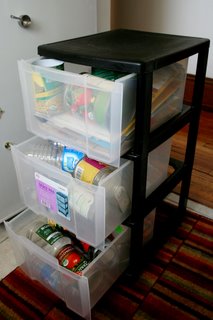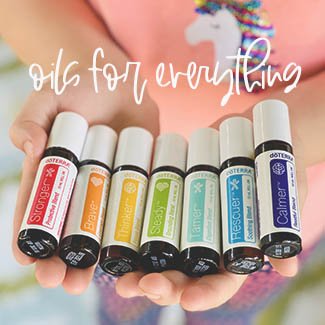Recycling is Fun
/ When we first moved into our new apartment, I wasn't exactly sure how I was going to set up my "recycling center". It took me a few days, but I found a solution that works great. This slick little drawer system fits perfectly in my hall closet (no, it doesn't sit in the middle of my kitchen as shown in the photo). It can comfortably hold about a month's worth of recycling. I have a separate basket for newspaper/office paper.
I didn't realize how wonderful curbside recycling really was...until now! When we lived in the house, I had 2 huge bins in the basement that I could throw stuff into. Every 2 weeks I would set it out, and poof! The recycling fairies would come and take it away. Now, I have to carry these drawers down 3 flights of stairs to my car and drive it to the metro recycling center (about 5 minutes away) where I hand sort it and throw it into the appropriate containers. It's too bad I don't have one of these nice reverse vending machines in my neighborhood. However, it does give me a great opportunity to talk to Bella about recycling while we're driving there.
When we first moved into our new apartment, I wasn't exactly sure how I was going to set up my "recycling center". It took me a few days, but I found a solution that works great. This slick little drawer system fits perfectly in my hall closet (no, it doesn't sit in the middle of my kitchen as shown in the photo). It can comfortably hold about a month's worth of recycling. I have a separate basket for newspaper/office paper.
I didn't realize how wonderful curbside recycling really was...until now! When we lived in the house, I had 2 huge bins in the basement that I could throw stuff into. Every 2 weeks I would set it out, and poof! The recycling fairies would come and take it away. Now, I have to carry these drawers down 3 flights of stairs to my car and drive it to the metro recycling center (about 5 minutes away) where I hand sort it and throw it into the appropriate containers. It's too bad I don't have one of these nice reverse vending machines in my neighborhood. However, it does give me a great opportunity to talk to Bella about recycling while we're driving there.
If you're reading this and you aren't a recycler...give some thought to the following:
- Recycling conserves our valuable natural resources.
- Recycling saves energy.
- Recycling saves clean air and clean water.
- Recycling saves landfill space.
- Recycling can save money and create jobs.
- Americans throw away 44 million newspapers everyday. That is the same as dumping 500,000 trees into landfills each week
- Paper products make up the largest part (approximately 40 percent) of our trash.
- Paper products use up at least 35 percent of the world's annual commercial wood harvest.
- People in the U.S. throw away enough aluminum every three months to rebuild our entire commercial air fleet.
- Americans throw away enough glass bottles and jars every two weeks to fill the 1.350-foot towers of the former World Trade Center.
Recycling is much more than just tin cans and newspapers. Recycling just means "to use again" or "to adapt to a new form or function". We live in a disposable-obsessed culture...and we tend to think we can only use things one time. There are many things around the house that can be re-used. I recycle my tin foil. I recycle plastic bags (check out this cool contraption). I recycle the envelopes/packaging that people send me. I recycle jars in my kitchen and use them for food storage. I wear recycled clothing.
Whenever you recycle, you are not just saving that item from being thrown away. You are saving all the resources involved in making a brand new item from scratch. For example, recycling aluminum saves 95% of the energy used to make the material from scratch. That means you can make 20 cans out of recycled material with the same amount of energy it takes to make one can out of new material.
One of the greatest things ever invented is a recycling network called Freecycle. Freecycle's mission is to keep stuff out of the landfills. See if your town has one...you'll love it.
You may be overwhelmed and not know where to start with recycling. Call your local recycling center and find out if they provide curbside recycling in your area. Most will provide free bins. Then, start with just one item. Then move to other items. Cereal boxes, cans, plastic bottles, glass containers...there are so many things that you can keep out of your trash by recycling. Start today...every little bit helps.
Find this information and more fun facts about recycling here.





